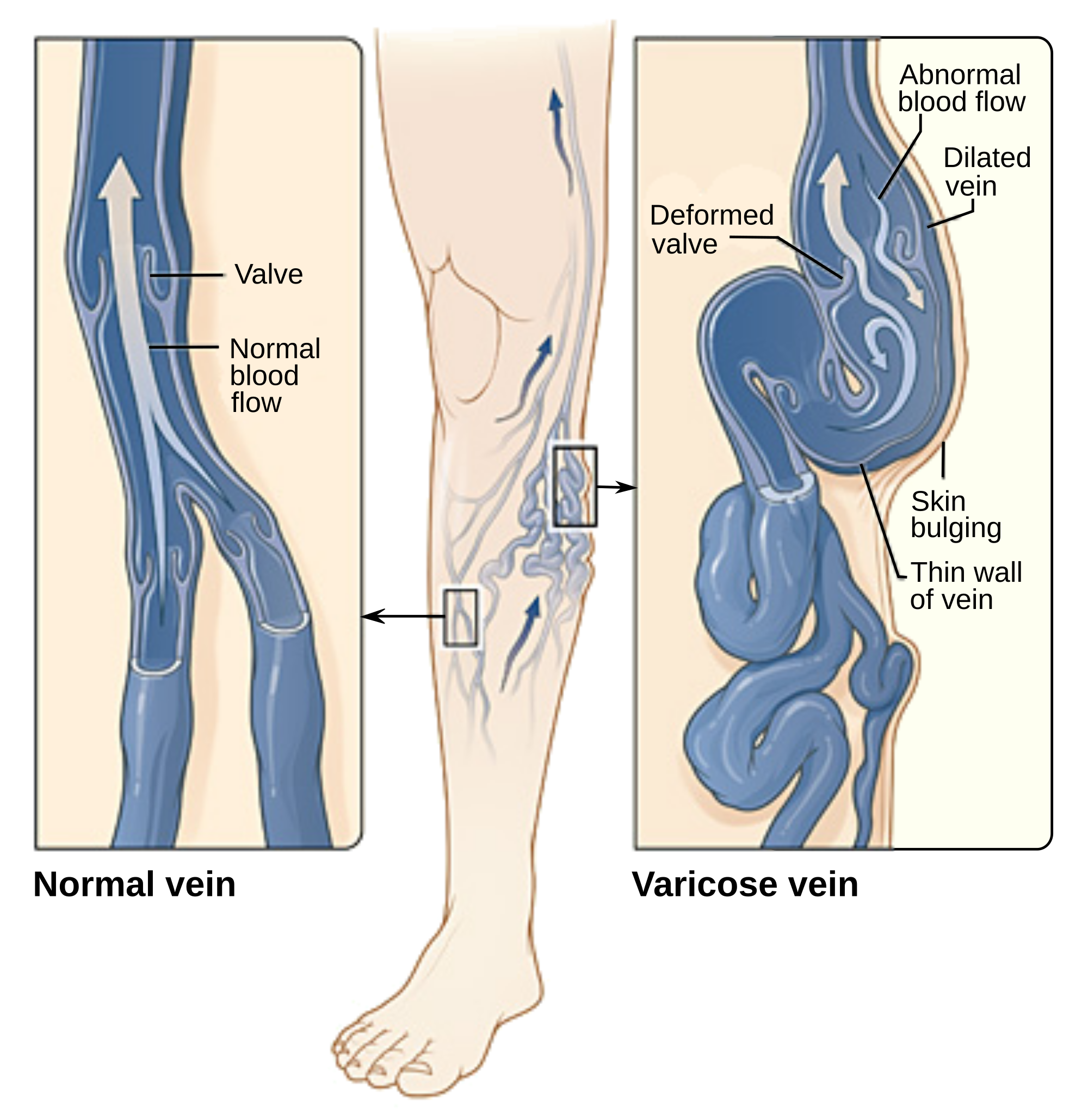Varicose veins are large, swollen veins that often appear on the legs and feet. Varicose veins occur when the valves in the veins do not work properly, so the blood does not flow effectively. The veins rarely need treatment for health reasons, but if swelling, aching, and painful legs result, and if there is discomfort then the treatment is available.
If the veins are large, they may need to be removed with the help of surgery. This is generally done by general anesthetics. In most of the cases patient can go home after surgery but if surgery is required on both legs, they may need to stay in the hospital for one day. Laser treatment is used for smaller veins, and also spider veins. Strong bursts of light are applied to the vein, which fades and disappears.
Varicose veins are large veins. Any vein may become varicose, but the veins mainly affected on your legs and feet. Because of standing and walking upright increase the pressure in the veins of your lower body.
Symptoms of varicose veins
- Veins that are dark purple or blue in color
- Veins appear twisted and bulging like cords on your leg
- Swelling on your legs.
- Heavy feeling in your legs.
- Muscle cramping and swelling in your lower legs.
- Heavy pain after standing or sitting for a long time.
- Itching around one or more of your veins.
- Color changes of your veins, irritation on the skin or skin ulcers near your ankle.

Causes of varicose veins
Age: – as you get older, your veins can lose elasticity, because of stretch on the legs. The valves in your veins may become weak, the blood that should be moving towards your heart to flow backward. Blood pools in your veins and your veins get large and become varicose.
Pregnancy: – some pregnant women have a problem of varicose veins. Due to an increase in pregnancy, the volume of blood in your body decreases from your legs to your pelvis.
Varicose veins may surface for the first time or during late pregnancy when your uterus exerts greater pressure on the veins in your legs. Hormonal changes in your body also play a vital role. Varicose veins that develop during pregnancy generally improve without medical treatment for 12 months.
Treatments for varicose veins
Doing regular exercise encourages better blood circulation in the legs; it helps to push along the blood that has collected through the veins. Exercise helps for lower blood pressure which is an alternative factor to varicose veins.
Exercise helps to get the calf muscles working without excessive strain. It includes as follows,
- Swimming
- Walking
- Yoga
- Cycling
If you are suffering from varicose veins, you can use stockings for most pharmacies and can help by applying pressure to the legs. This is helping the muscles and veins to move blood towards the heart.
Dry fruits can also help to prevent varicose veins because in dry fruits there is high potassium which can minimize water retention. They are as follows
- Almonds and pistachio nuts
- White beans
- Potatoes
- Leafy vegetables.
Veriheal oil – it’s a beneficial treatment for varicose veins. Regular use of this oil maintains your blood flow and relieves your legs. You can apply this oil twice in a day.
